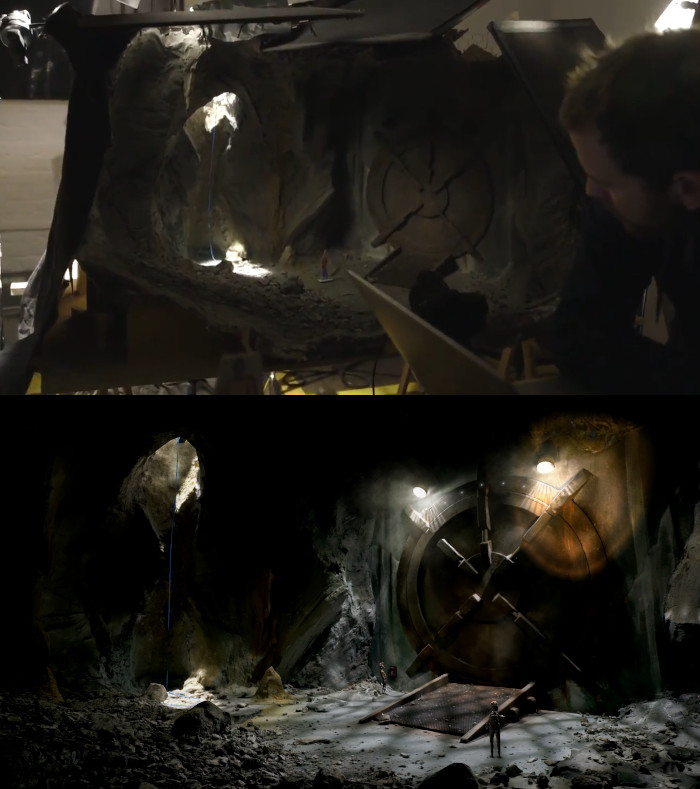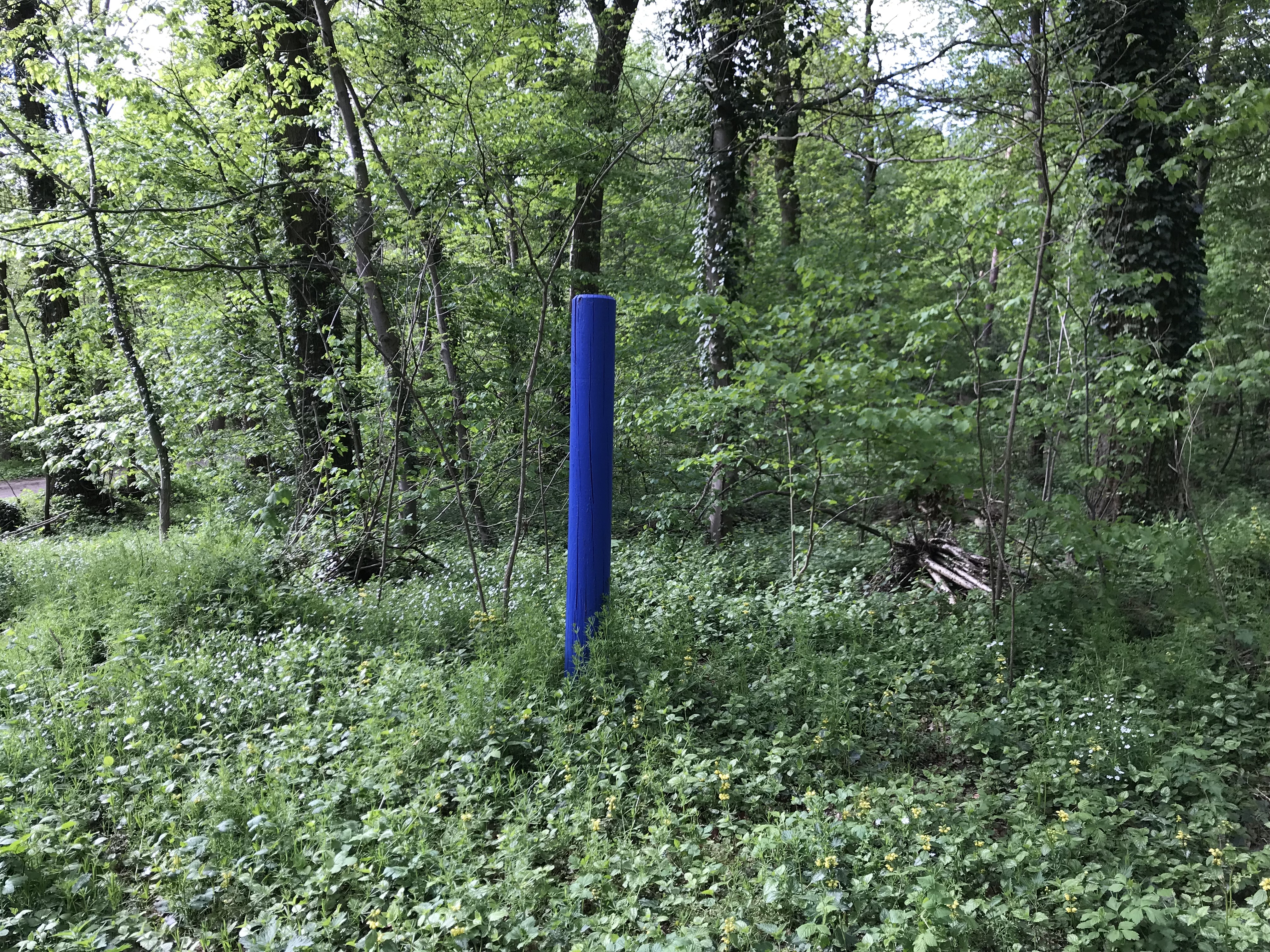Latest reviews
The museum houses objects from pre-Columbian times that are several thousand years old as well as colonial objects and 20th-century objects of native Americans, many of them beautiful and informative.
The framing of the accompanying texts and their concept of history is outrageous though. Problems of the commons American and Spanish history since 1492 are barely expounded. 18th-century paintings showing racial typologies are displayed without comment on their racist content or their context. The later parts of the recommended tour deal with aspects of culture of the Americas like “marriage”; it is quite odd to see topics dealt with for the area of countless different cultures on two continents in thousands of years.
Fortunately most objects have labels with a title, material description, origin and inventory number, sometimes also a descriptive note.
Trüberbrook is a 2019 point and click adventure game set in a fictional eponymous small town in late 1960s Germany. You play as Hans Tannhauser, an American quantum physics student with German ancestry, who has won a vacation to Trüberbrook (without entering any contest!).
During the first night in his hostel, Tannhauser’s notes on quantum physics are stolen. As he starts tracking down the thief, the evidence points to an abandoned mine, and he soon pairs up with a visiting paleoanthropologist named Gretchen Lemke who is also seeking to explore it. What is the connection between the mine and Hans’ work in quantum physics?
What stands out the most about Trüberbrook is its unique visual style. All backgrounds are based on digitized miniatures, enhanced by in-game lighting and shadow effects. The 3D character models aren’t photorealistic; they look more like clay figures, which works well enough in this setting.

Trüberbrook’s unique aesthetic is the result of the digitization of painstakingly hand-crafted miniatures (Credit: btf. Fair use.)
The gameplay is classic point-and-click adventure fare (walk around, pick up stuff, talk to other characters, combine items), with a simplified inventory system. For example, if you have a screwdriver in your inventory, and you want to unscrew a TV set, you click on the TV set, and the screwdriver becomes available as a possible interaction.
This reduces the “combine everything with everything” aspect of many adventure games, but it would have been nice to at least be able to explore your inventory (it’s only optionally displayed as an icon bar, without descriptions).
The game’s lovingly created visuals can’t help Trüberbrook to overcome mediocrity in most other areas: storytelling, character development and puzzle design. To name an example in each category:
-
Storytelling: In an early chapter, Hans must escape from a medical facility. But the game never fully resolves why he was kept there in the first place.
-
Character development: While Trüberbrook has its share of quirky characters, the game’s protagonist is almost entirely without personality, and the motivations of its villain are poorly explained.
-
Puzzle design: In one puzzle, you obtain an important item by ordering a beer at the hostel reception. But the option to order a drink only becomes available after you exhaust all other (unrelated) dialog options.
There are exceptions, of course—the game has a few truly delightful, clever and funny moments. With more time spent on everything other than its visuals, it could have been a great game. As it is, if you find the visuals and setting appealing, you may wish to pick it up on sale and keep a walkthrough handy to keep frustrations to a minimum.
Great place, awesome objects, well lit, well described.
The Spanish and English object descriptions on the website are often more detailed than those of the printed guidebook. So if you have internet connection and read Spanish or English they deliver profound and free information.
A few more benches inside would be nice. Unfortunately, there are no lockers for small bags. As with many museums nowadays the security check-in is annoying.
It seems everything in this museum has been recently reworked – the building, the texts, the flat screens – without saving money. And without question the museum holds a great collection of objects. Their presentation though is very insufficient in many ways, the museum labels don’t even display inventory numbers, some showcases like one with Sephardi objects don’t even have object level description labels.
The advertised app is available in Spanish, English and French. On iOS, it can only be used in landscape mode and with running screen. It doesn’t save video positions if you leave a video.
The richness of the collection is worth the visit.
The cafe is a great place to have coffee of fresh pressed orange juice and work a bit in the shadow of the Alameda trees. At the street tables the wifi is quite weak. There are sockets inside and a couple of books.
Beyond question, the Museo Nacional Thyssen-Bornemisza holds an extraordinary collection. The objects are well lit, object descriptions are available online via QR codes on the museum labels. Information on the objects feels like well finished.
That said, the collection is advertised as “Un paseo por la historia del arte” and indeed it is “a walk through the history of art” if we count only European and Western art from medieval times and mainly paintings though the collections has a couple of sculptures and objects of decorative arts as well. The paintings feel like a who’s who of this history without too many surprises of less known names.
For many of the works the visit is worthwhile of course. The compilation of objects is one not too fruitful for me. Of two days off in Madrid, I’d rather spend both in the Prado than one here.
Der Grüne Ring ist ein 80 bzw. 160 Kilometer langer Rundweg in und um Hannover. Er führt an vielen bekannten und beliebten Plätzen der Stadt und der Region vorbei. Wer neu in der Stadt oder dem Umland ist kann mit diesem Weg einen guten Grundstein legen um die Erkundung der neuen Umgebung zu starten.

Fahrradweg (rechts im Bild) als Teilstück des Grünen Rings in Hannover (Eigenes Werk. Lizenz: CC-BY-SA.)
Die Kennzeichnung des Weges erfolgt nicht über Schilder oder Richtungswegweiser sondern, entgegen dem Namen, durch blaue markierte Objekte entlang der Strecke. Das können Bänke, Zäune, Laternen oder Gullydeckel sein. Alternativ kann die Route für den Basisring oder den erweiterten Ring als [GPX-Datei auf der Seite der Stadt Hannover heruntergeladen](https://www.hannover.de/Kultur-Freizeit/Naherholung/Natur-erleben/Radfahren/Grüner-Ring/Der-Grüne-Ring) werden.

Wegmarkierung des Grünen Rings in Hannover (Eigenes Werk. Lizenz: CC-BY-SA.)
Der 80 Kilometer lange Basisring kann auch von ungeübten Radlern gut befahren werden. Wenn einen die Kraft verlässt oder das Rad einen Platten bekommt ist immer eine Haltestelle des Nahverkehrs in Reichweite. Der erweiterte Ring mit der etwa doppelten Strecke ist an einem Stück für geübte Radler erfahrbar oder kann gut in mehrere Etappen aufgeteilt werden.
I was 16 years old when The Terminal Experiment by Robert Sawyer was published in 1995. This was the time when the Internet was starting to break into the mainstream, and everyone was trying their hands at predicting its impact. In Newsweek that year, Clifford Stoll famously wrote:
The truth in no online database will replace your daily newspaper, no CD-ROM can take the place of a competent teacher and no computer network will change the way government works.
How does a Nebula-winning sci-fi novel from 1995 about mind uploading, artificial intelligence, and morality hold up in 2021? In the case of The Terminal Experiment: not too well.
Sawyer’s vision of the 2000s and 2010s is, unavoidably, a mix of correct predictions (e-readers are commonplace), false extrapolations (CompuServe seems as important as the Internet) and unlucky guesses (instead of buying a newspaper, print it on demand!). But more than its future past, the book’s story will challenge any reader’s suspension of disbelief.
Soul search
The protagonist, Peter Hobson, is a Canadian biomedical engineer who has devised highly sensitive brain scanning equipment (a “superEEG”) to determine the exact moment of a person’s death. But the superEEG picks up something else: a pattern of brain activity—an electrical field—that leaves the human body after its death.
Has Hobson found evidence for life after death, and if so, what’s the nature of this afterlife? If given a choice between physical immortality or the hereafter, which should we prefer? It’s a timely question in Hobson’s world, as a California firm called “Life Unlimited” has begun marketing nanotech life extension techniques that promise practical immortality for all intents and purposes.
Luckily, Hobson’s best friend Sarkar Muhammed is an AI expert who has also tried his hand at mind uploading using Hobson’s brain scanning equipment. It’s still an experimental technique, of course, but Hobson volunteers to have three copies (simulations or “sims”) of his mind created:
-
an unmodified copy (the control);
-
a mind that perceives itself to be immortal but still human;
-
a mind that perceives itself to be a disembodied spirit, with no worldly concerns.
The friends’ scientific inquiry is disrupted when one of the sims appears to commit a grisly murder. Hobson and Muhammed find themselves in a race with the police to find out what happened, and which of the sims (if any) is responsible. Can the two plucky Canadians solve the mystery and prevent further killings?
Philosophy first
I’ll spare you any spoilers, but honestly, it would be hard to spoil the book—the major plot points are fairly predictable, and I say that as someone who is probably more oblivious to such things than the average reader.
The Terminal Experiment puts its philosophical premise above everything else (plot, characters, worldbuilding). Even its protagonist, Peter Hobson, is named for Hobson’s Choice, which relates to the book’s central premise. (In case you didn’t guess that, the book helpfully tells you so, repeatedly.)
The conversations Hobson and Muhammed have with the three copies of Hobson’s mind are the most engaging part of The Terminal Experiment. I found Spirit in particular (the copy that imagines itself to be in a kind of afterlife) to be the book’s most interesting character.
Because it explores some interesting philosophical questions, Sawyer’s book is not without merits, but if you had it in your backlog for a while, I wouldn’t recommend it for anything other than a lazy afternoon or a long plane trip.
Twitter hat sich vom Informationsdienst für Freunde und Bekannte über das Neuigkeitenportal für die Stars und Sternchen hin zu einem reinen Nachrichtendienst entwickelt. So zumindest meine Auffassung des Mikrobloggingdienstes aus den USA.
Twitter war nie das, was Facebook war: Der Dienst, bei dem gefühlt alle aus dem Umfeld vertreten waren. Twitter war immer so ein bisschen für die Nerds im Netz. Daher ist Twitter bei mir auch nie über ein reines Konsumtools hinaus gekommen. Aktiv habe ich mich dort so gut wie gar nicht eingebracht. Und mittlerweile fehlt mir dazu auch die Lust. Eine kleine Aufzählung von Sachen, die mich an Twitter besonders stören:
-
scheinbar willkürliche und zufällige Blockaden von Accounts ohne Angabe von Gründen.
-
persönliche Beleidigungen und Demütigungen von Nutzern, die weit über das vielbeschworene Facebook-Niveau hinausgehen
-
nicht nachvollziehbare Behandlung von gemeldeten Inhalten
Alles in allem bleibt Twitter für mich somit nur noch ein Informations- und Nachrichtenkanal, der, und das muss man einfach zugestehen, sehr schnell Informationen verbreiten kann. In dieser Sache ist Twitter bis heute unerreicht auch wenn es mittlerweile quelloffene und dezentrale Alternativen wie Mastodon gibt, die auch in Sachen Datenschutz sehr viel besser abschneiden. Aber vielleicht kommt es bei Mastodon (hier meine Rezension) ja noch zum Durchbruch. Zu Wünschen wäre es dem Projekt auf jeden Fall.
Den Stadtteil Bornum kannte ich bis vor kurzem nur vom Hörensagen und dadurch ist mir auch dieses griechische Restaurant nicht untergekommen. Ganz spontan war daher auch unser Besuch und wir wurden nicht enttäuscht.
Die Servicekraft für unseren Bereich auf der Terrasse hatte ihren zweiten Tag im neuen Beruf und es lief alles ein wenig holprig. Sie war dennoch freundlich und sehr um unser Wohlergehen bemüht.
Getränke, Speisen und der obligatorische Ouzo waren schnell am Platz. Sonderwünsche bei den Gerichten wurden selbstverständlich notiert und auch umgesetzt. Die Speisen waren von guter Qualität und sehr reichlich. Verhungern muss hier niemand.
Souflaki-Roulade im Restaurant Konstantinos in Hannover-Bornum (Eigenes Werk. Lizenz: CC-BY-SA.)
Fazit
Wer in der Gegend ist und Hunger auf griechische Speisen hat macht mit diesem Restaurant nichts falsch.
